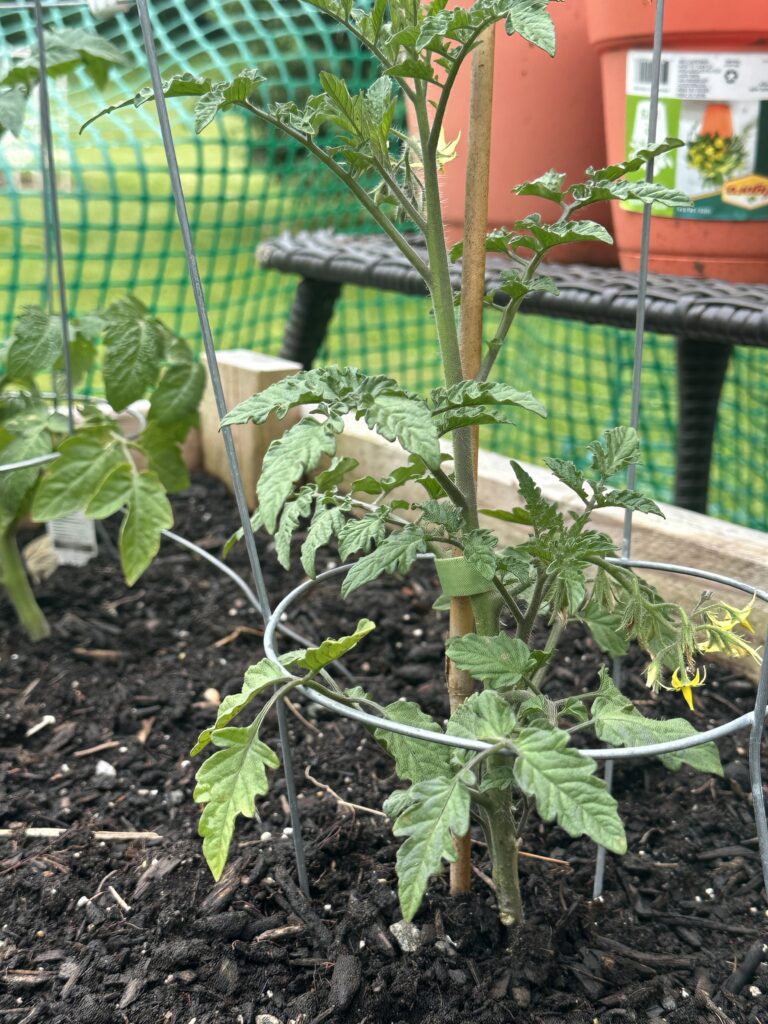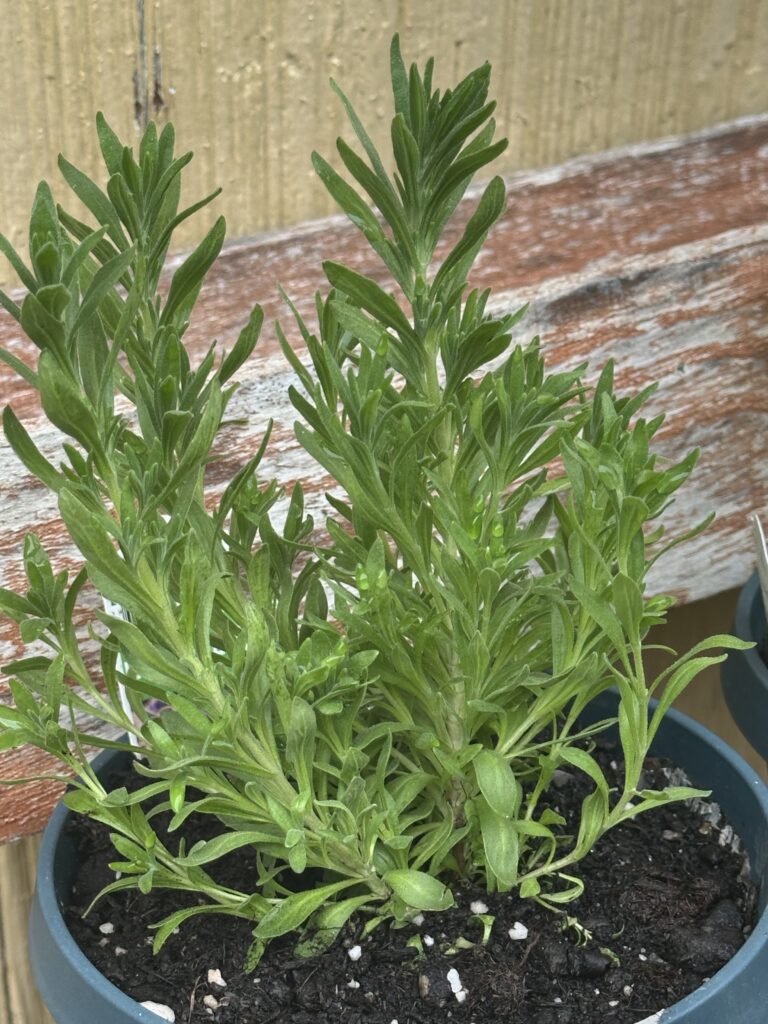Introduction: The Joy of Garden Planning
As the year begins and the days stretch longer, there’s something undeniably magical about starting to think ahead to the gardening season. For gardeners, it’s not just about the physical act of planting—it’s about dreaming, planning, and envisioning the beauty and bounty of a garden that will unfold over the months. The seed catalogs are flooding my mailbox, and the possibilities are endless. But as much as I’d love to plant every gorgeous variety of vegetable, flower, and herb, the reality is, I have to narrow it down. I’m setting my sights on a few key plants this year—ones that I knowwill bring me joy, satisfaction, and, hopefully, a bountiful harvest.
So, let’s talk about the five things I’m absolutely going to grow this year (probably). These are the plants that have made it to the top of my list, and I’m excited to share why they’ve earned a spot in my garden. Let’s dive in!
1. Tomatoes: The Ultimate Garden Classic
Tomatoes are a staple in nearly every gardener’s plot, and for good reason. There’s nothing quite like a fresh, juicy, sun-warmed tomato plucked right from the vine. While I’ve tried various varieties in the past, this year I’m narrowing it down to a few tried-and-true favorites.

Why I Love Tomatoes:
- Taste: Homegrown tomatoes are leagues ahead of store-bought ones in flavor. There’s a sweet, almost tangy essence to them that can’t be replicated. I grow a mix of varieties, from cherry tomatoes to beefsteaks, so I can enjoy them in salads, sauces, and sandwiches.
- Variety: There are so many types of tomatoes to choose from, each with its own unique flavor, shape, and color. From heirlooms to hybrids, I love experimenting with different varieties each year to find new favorites.
Varieties I’m Growing This Year:
- Brandywine: An heirloom variety known for its large, juicy fruits with a rich, sweet flavor. It’s perfect for slicing and adding to sandwiches or salads.
- Cherokee Purple: Another heirloom, this one has a deep, dusky purple hue and a slightly smoky flavor. It’s great for making salsas and sauces.
- Tiny Tim: A dwarf variety that’s perfect for container gardening. This one produces small but sweet cherry tomatoes and is great for those with limited space.
Growing Tips:
- Space: Tomatoes love the sun, so choose a spot that gets at least 6-8 hours of direct sunlight each day. If you’re planting multiple varieties, make sure to space them out properly to avoid overcrowding.
- Watering: Consistent watering is key to avoiding issues like blossom end rot. Water deeply at the base of the plants, and try to keep the foliage dry.
- Support: Whether you use cages, stakes, or trellises, make sure your tomatoes are properly supported as they grow. This will help keep them upright and prevent the weight of the fruit from pulling them over.
Why I’m Growing Tomatoes This Year:
Every year, tomatoes are a must-have in my garden because they’re versatile, delicious, and just plain fun to grow. There’s a sense of pride that comes with harvesting your own tomatoes—plus, they’re incredibly rewarding to grow from seed to plate.
2. Zucchini: The Workhorse of the Summer Garden
Zucchini is one of those vegetables that I absolutely can’t live without during the summer. It’s low-maintenance, prolific, and incredibly versatile. Whether it’s grilled, sautéed, shredded into a frittata, or baked into a loaf, zucchini is a vegetable that adds flavor and nutrition to any meal.

Why I Love Zucchini:
- Ease of Growth: Zucchini is a perfect vegetable for beginners and experienced gardeners alike. It’s easy to grow, doesn’t require a lot of attention, and produces an abundant harvest with minimal effort.
- Prolific Harvest: Once zucchini plants start producing, they don’t stop. A single plant can provide you with dozens of zucchinis throughout the season, making it a great addition for anyone looking to fill their pantry with homegrown produce.
Varieties I’m Growing This Year:
- Black Beauty: This classic zucchini variety has a dark green skin and tender flesh. It’s perfect for slicing and sautéing, and it produces a heavy yield.
- Golden Zucchini: A beautiful yellow zucchini that adds a pop of color to your garden and meals. It has a slightly sweeter flavor than traditional green zucchinis.
- Cocozelle: An Italian heirloom variety with a slightly striped appearance and tender, mild flavor. It’s perfect for grilling or stuffing.
Growing Tips:
- Space: Zucchini plants are known for their sprawling growth habit, so be sure to give them enough space to spread out. If you’re limited on space, you can grow them vertically on a trellis to save room.
- Watering: Zucchini needs consistent moisture, especially during the fruiting stage. Water deeply, but avoid getting water on the leaves to prevent mildew.
- Pollination: Zucchini is a great plant for attracting pollinators like bees, so consider planting it near other flowers that will help bring these crucial creatures into your garden.
Why I’m Growing Zucchini This Year:
Zucchini has always been a staple in my garden because of how easy it is to grow and how much it yields. It’s the perfect vegetable to add to any dish, and it’s ideal for anyone who loves cooking with fresh, homegrown ingredients.
3. Sunflowers: Brightening Up the Garden
Sunflowers are a must-have in my garden for both their beauty and their usefulness. They add a cheerful pop of color to any garden space and attract a wide range of pollinators, including bees and butterflies. But they also serve a more practical purpose—they help to provide support for climbing plants like beans and peas.
Why I Love Sunflowers:
- Beauty: Sunflowers are, quite simply, stunning. Their large, vibrant blooms stand out in the garden and bring a sense of happiness and warmth. They’re the kind of flower that makes you smile every time you look at them.
- Pollinator-Friendly: Sunflowers are excellent for attracting bees and other pollinators. The more pollinators you have in your garden, the better your overall harvest will be.
- Edible Seeds: Depending on the variety, sunflower seeds can be harvested and enjoyed as a nutritious snack. Some varieties, like the Mammoth sunflower, are specifically grown for their large seeds.
Varieties I’m Growing This Year:
- Mammoth Russian: These towering sunflowers can grow up to 12 feet tall and produce large heads filled with seeds. They’re perfect for snacking or making homemade sunflower butter.
- Autumn Beauty: A mix of red, orange, and yellow flowers that add a bit of variety to the typical sunflower palette. These are shorter and more compact than other varieties, making them great for smaller gardens.
Growing Tips:
- Sun: Sunflowers thrive in full sun, so choose a spot in your garden that gets at least 6-8 hours of sunlight each day.
- Space: Sunflowers can grow quite tall, so make sure to give them enough space. If you’re planting several in a row, space them about 1-2 feet apart.
- Watering: While sunflowers are drought-tolerant once established, they do best with regular watering during the growing season.
Why I’m Growing Sunflowers This Year:
Sunflowers are a visual delight in the garden. Their tall, stately blooms create a beautiful backdrop for other plants, and they’re a great way to add variety and color to my garden. Plus, they’re just fun to grow and perfect for my pollinator-friendly garden goals.
4. Lavender: The Fragrant Herb
Lavender is one of those plants that instantly transports you to a peaceful place. The scent alone is enough to make anyone relax, and its beautiful purple flowers add a touch of elegance to any garden. It’s also incredibly versatile, serving as both a culinary herb and a natural remedy.

Why I Love Lavender:
- Fragrance: There’s no denying that lavender has one of the most delightful scents of any plant. Its calming properties make it perfect for creating a peaceful outdoor space.
- Culinary and Medicinal Uses: Lavender can be used in cooking, particularly in baked goods like cookies and scones. It’s also a popular ingredient in herbal teas and essential oils, known for its calming and relaxing effects.
Varieties I’m Growing This Year:
- Munstead: A compact variety that’s perfect for smaller spaces. It’s known for its rich purple color and strong fragrance.
- Provence: A taller variety with long, elegant spikes of lavender flowers. This one is ideal for making essential oils or adding to homemade sachets.
Growing Tips:
- Sun: Lavender loves full sun and well-drained soil. Choose a spot that receives at least 6-8 hours of sunlight per day.
- Watering: Lavender is drought-tolerant once established, but it needs to be watered regularly during its first year of growth. Be sure to allow the soil to dry out between waterings to prevent root rot.
- Pruning: Regular pruning helps keep lavender plants healthy and encourages new growth. Trim back the stems after the flowers have faded to promote a compact, bushy shape.
Why I’m Growing Lavender This Year:
Lavender is a plant that brings beauty, fragrance, and a sense of calm to my garden. It’s also incredibly useful in the kitchen and in homemade wellness products, making it a plant that serves multiple purposes.
5. Kale: The Superfood You Can’t Ignore
Kale has become a superfood staple, and for good reason. It’s packed with nutrients and easy to grow, making it a perfect addition to any garden. Whether you’re tossing it in salads, smoothies, or making crispy kale chips, this leafy green is a winner in the kitchen.
Why I Love Kale:
- Nutritional Value: Kale is loaded with vitamins, antioxidants, and fiber. It’s one of the healthiest leafy greens you can grow and adds a healthy boost to any meal.
- Cold Tolerance: Kale is a cool-season crop that can be grown in both spring and fall. It can tolerate frost, which makes it a perfect plant for extending your growing season.
Varieties I’m Growing This Year:
- Winterbor: A curly-leaf variety that’s perfect for smoothies, salads, and soups. It’s incredibly cold-hardy, making it ideal for early spring and late fall harvests.
- Dwarf Blue Curled Vates: A compact variety that’s perfect for smaller gardens or container gardening. It has a slightly milder flavor than other kale varieties, making it great for those new to kale.
Growing Tips:
- Space: Kale plants need plenty of space to grow, so give them room to spread out. Space them about 12 inches apart in rows.
- Watering: Keep the soil consistently moist, especially during hot weather. Kale has shallow roots, so it benefits from frequent watering.
- Harvesting: Harvest the outer leaves of the plant as they mature, allowing the inner leaves to continue growing. This will provide a continuous supply of fresh greens.
Why I’m Growing Kale This Year:
Kale is not only nutritious and easy to grow, but it’s also versatile in the kitchen. I love having fresh greens on hand for salads, smoothies, and healthy snacks throughout the growing season.
The Garden That Brings Me Joy
These five plants—tomatoes, zucchini, sunflowers, lavender, and kale—are the ones I’m absolutely going to grow this year (probably). Each of them offers something unique, whether it’s the taste of homegrown tomatoes or the calming scent of lavender. Gardening is about finding joy in the process, and I can’t wait to see how these plants will grow, evolve, and thrive in my garden this season.
Remember, your garden is a reflection of your interests, tastes, and the energy you put into it. So, whether you’re growing a tiny herb garden or a sprawling vegetable plot, take the time to plan it out and enjoy the process. Here’s to a successful, productive, and joyful gardening year ahead!
